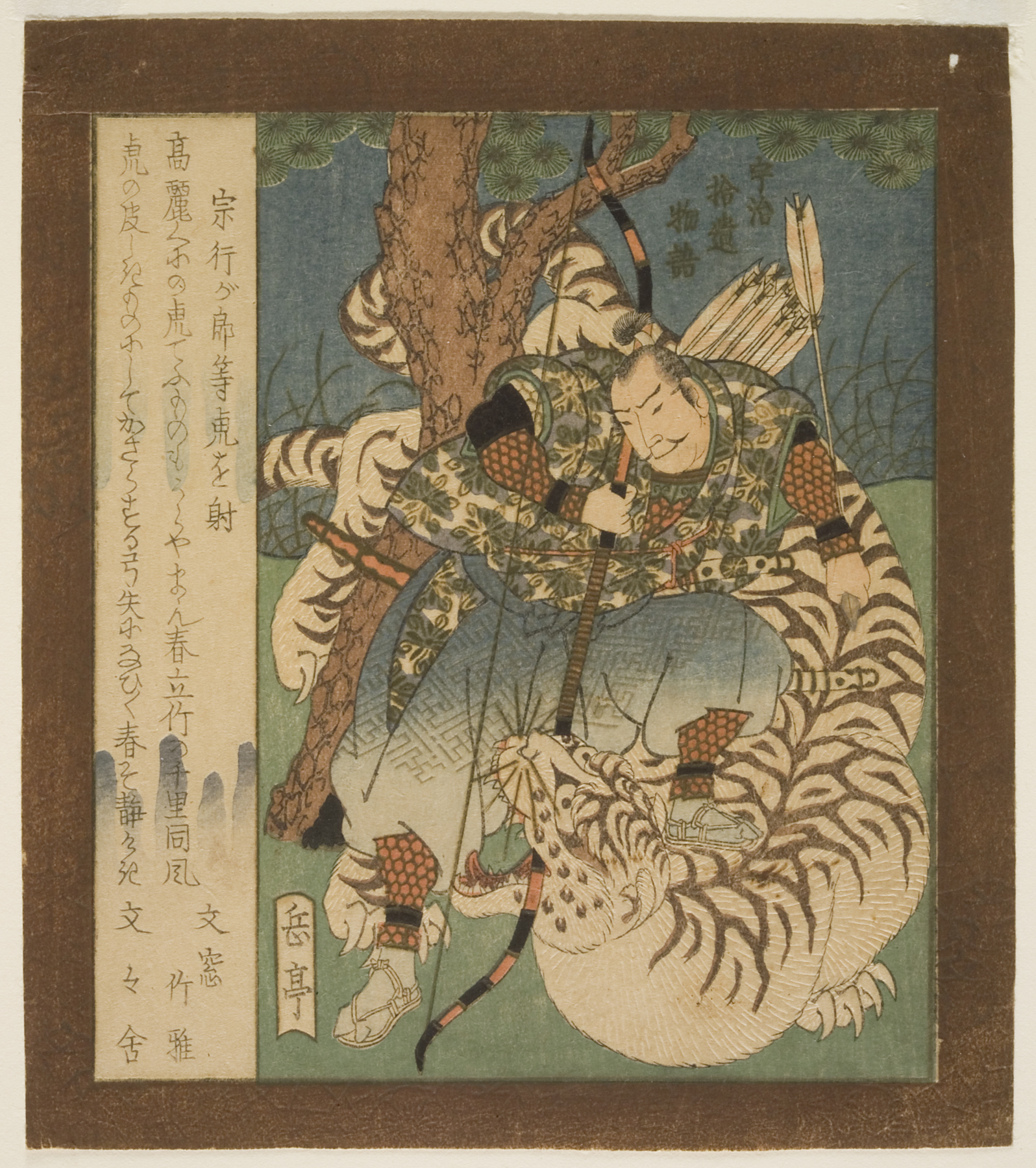Muneyuki ga rōtō tora o utsu (Muneyuki's soldier slays a tiger), Yashima Gakutei
Artwork Overview
Yashima Gakutei, artist
circa 1786–1868, active 1815–1852
Muneyuki ga rōtō tora o utsu (Muneyuki's soldier slays a tiger),
circa late 1820s, Edo period (1600–1868)
Portfolio/Series title: Uji Shūi Monogatari (Tales of Uji)
Where object was made: Japan
Material/technique: color woodcut
Dimensions:
Image Dimensions Height/Width (Height x Width): 211 x 185 mm
Image Dimensions Height/Width (Height x Width): 8 5/16 x 7 5/16 in
Sheet/Paper Dimensions (Height x Width): 211 x 185 mm
Sheet/Paper Dimensions (Height x Width): 8 5/16 x 7 5/16 in
Mat Dimensions (Height x Width): 19 x 14 in
Image Dimensions Height/Width (Height x Width): 211 x 185 mm
Image Dimensions Height/Width (Height x Width): 8 5/16 x 7 5/16 in
Sheet/Paper Dimensions (Height x Width): 211 x 185 mm
Sheet/Paper Dimensions (Height x Width): 8 5/16 x 7 5/16 in
Mat Dimensions (Height x Width): 19 x 14 in
Credit line: William Bridges Thayer Memorial
Accession number: 0000.1540
Not on display
If you wish to reproduce this image, please submit an image request







